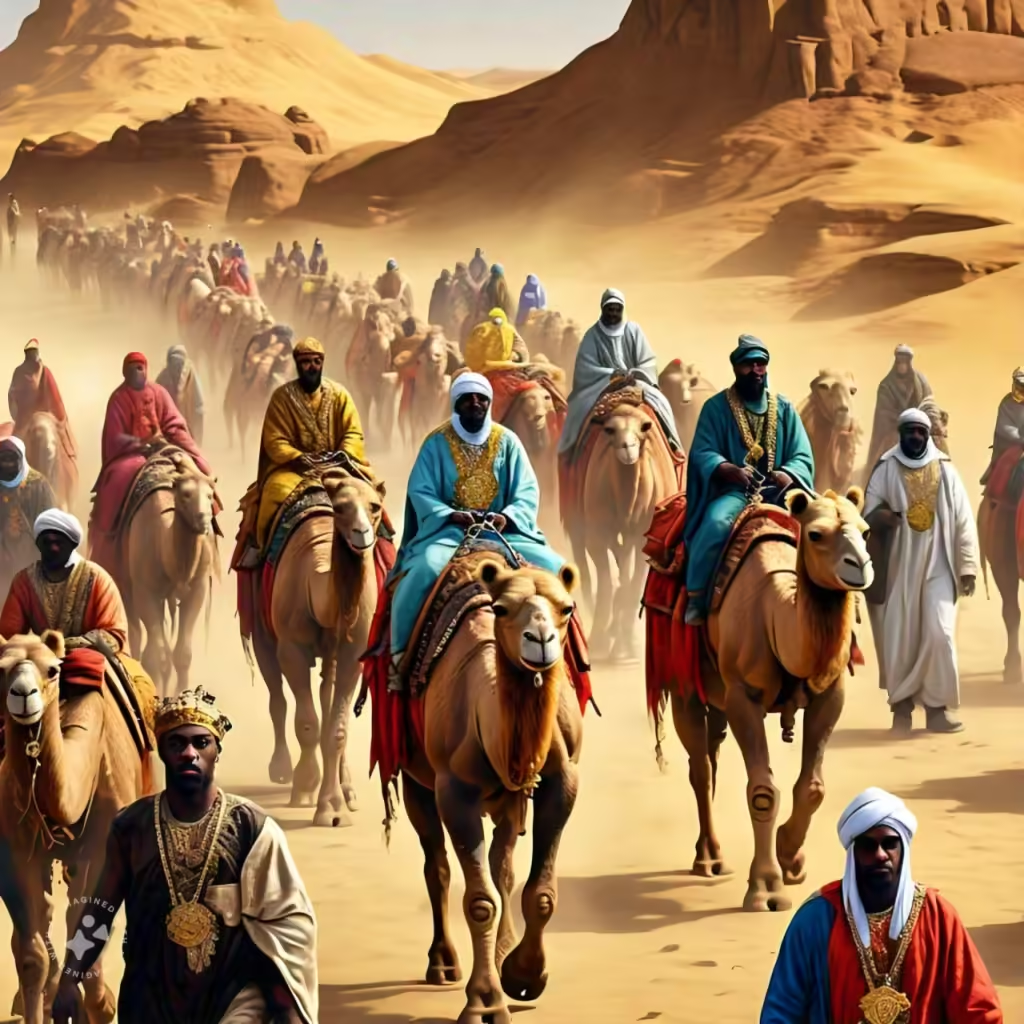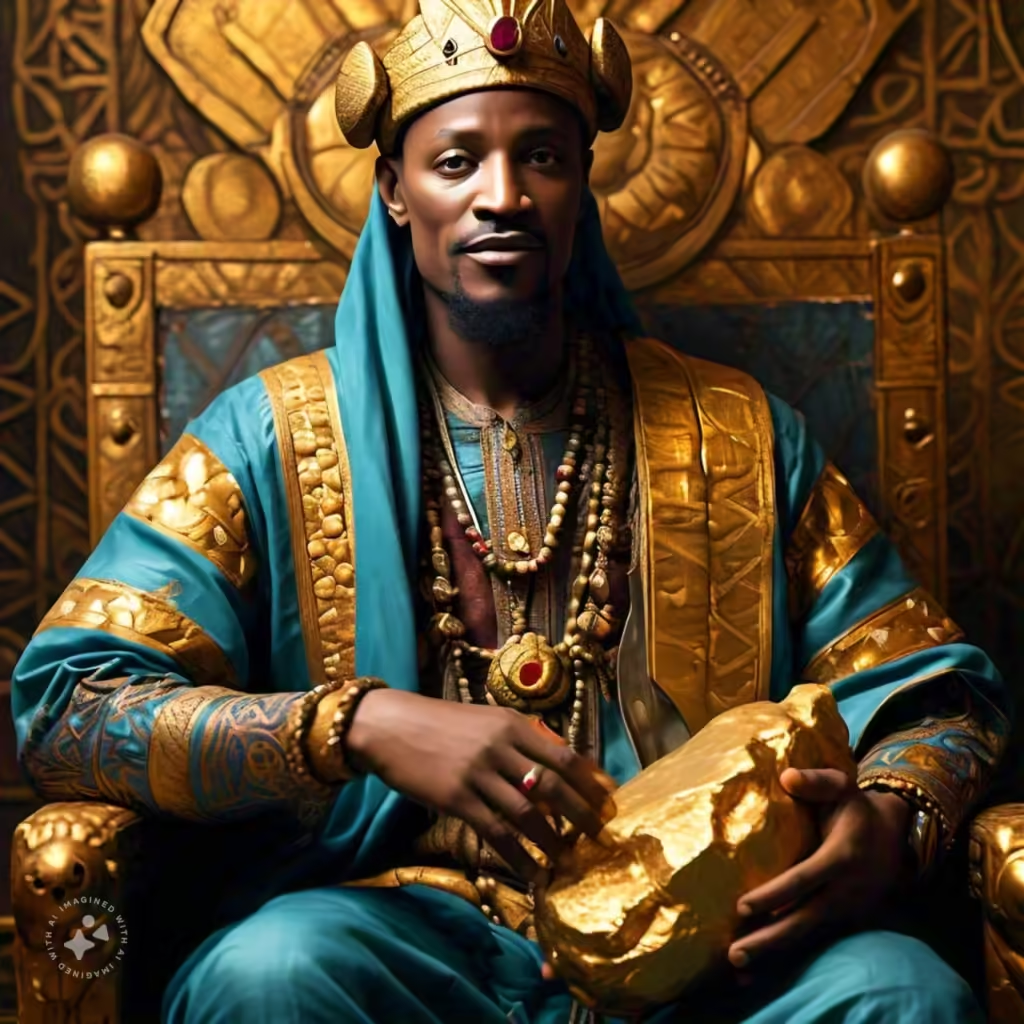Introduction
When we think of wealth, names like Jeff Bezos, Elon Musk, and Bill Gates come to mind. However, none of these modern billionaires comes close to the staggering riches of Mansa Musa, the 14th-century emperor of the Mali Empire. With a fortune estimated to be worth over $400 billion in today’s terms, Mansa Musa remains the wealthiest individual in history. This blog will explore Mansa Musa’s life, his vast empire, and the legacy of wealth he left behind.
Early Life and Rise to Power
Mansa Musa was born in 1280 into a ruling family in the Mali Empire. His birth name was Musa Keita I, and he became the 10th Mansa (King) of the Mali Empire after his predecessor, Abu Bakr II, mysteriously disappeared during an expedition to explore the Atlantic Ocean. In 1312, Musa ascended to the throne, inheriting one of the largest empires in West Africa, rich in natural resources, particularly gold.
The Mali Empire under Mansa Musa stretched across vast territories, including present-day Mali, Senegal, Gambia, Guinea, Niger, Nigeria, and Mauritania. This area housed the world’s largest gold mines at the time, and Musa’s control over this wealth would earn him his place in history.
The Unimaginable Wealth of Mansa Musa
What made Mansa Musa stand out from other rulers was not just his power but his unimaginable wealth. It is believed that the Mali Empire produced more than half of the world’s gold supply during his reign. Mansa Musa controlled all the gold trade, ensuring his empire’s wealth increased exponentially.
Key aspects of Mansa Musa’s wealth:
- Gold Production: Mali was the largest gold producer in the world during the 14th century.
- Salt Trade: Along with gold, the empire controlled the lucrative salt trade, further boosting its economic power.
- Expansion of Empire: Musa’s military campaigns expanded Mali’s territory, adding more resources and trade routes under his control.
The Famous Pilgrimage to Mecca (1324-1325)
Mansa Musa is perhaps best known for his lavish pilgrimage to Mecca in 1324, a journey that highlighted his wealth to the rest of the world. Accompanied by a caravan of 60,000 men, including soldiers, merchants, and slaves, he brought with him immense quantities of gold. The entourage included 12,000 slaves, each carrying gold bars, and 80 camels, each carrying between 50 to 300 pounds of gold.
During the pilgrimage:
- Generosity: Musa’s generosity was legendary. He gave away so much gold in Egypt and other places that it caused massive inflation, depreciating the value of gold for over a decade.
- Construction Projects: Along the way, he commissioned the construction of mosques and madrasas (Islamic schools), including the famous Djingareyber Mosque in Timbuktu, cementing Mali as a center of Islamic learning.
This journey not only showcased his wealth but also made Mali famous across the Islamic world and Europe. It put the empire on the world map, literally — European cartographers began to depict the Mali Empire in their maps with Musa sitting on a throne, holding a scepter and a gold nugget.

Timbuktu: A Center of Trade and Learning
Under Mansa Musa’s rule, Timbuktu became a center of wealth, culture, and learning. He established the University of Sankore, which attracted scholars from across Africa and the Middle East. Timbuktu became one of the most important cities for Islamic learning and culture, with libraries holding thousands of manuscripts.
Musa’s investments in infrastructure, education, and religion transformed Mali into one of the wealthiest and most powerful empires in the world, influencing global trade for centuries.
Legacy of Mansa Musa
Mansa Musa’s death in 1337 marked the end of an era, but his legacy endured.
His incredible wealth, grand construction projects, and efforts to promote Islamic education left an indelible mark on the history of West Africa. His reign demonstrated how vast wealth could be used to foster cultural and intellectual growth, turning the Mali Empire into a beacon of civilization.
In modern times, Mansa Musa’s name is still synonymous with legendary wealth. His story is often used as a symbol of the potential for African prosperity, reminding the world of Africa’s rich history and its significant contribution to the global economy.
Conclusion
Mansa Musa’s wealth may never be rivaled, not even by the wealthiest individuals of today.
His reign represents one of the most prosperous periods in African history, and his
contributions to trade, culture, and education continue to influence the world to this day. Mansa Musa’s story is more than just a tale of riches; it is a legacy of leadership, generosity, and vision that shaped an empire.
Tired Of Reading? Listen Voice!
Support Us By Sharing Our Content!
FAQs
1. Who was Mansa Musa?
Mansa Musa was the 10th emperor of the Mali Empire, reigning from 1312 to 1337. He is widely regarded as the richest person in history.
2. How did Mansa Musa become so rich?
Mansa Musa’s wealth came primarily from Mali’s vast gold mines and control over the lucrative salt trade.
3. What was the significance of Mansa Musa’s pilgrimage to Mecca?
Mansa Musa’s pilgrimage to Mecca showcased his incredible wealth to the world. His generous distribution of gold caused inflation in the regions he passed through, highlighting the vastness of his fortune.
4. What is Mansa Musa’s legacy?
Mansa Musa is famous for his immense wealth, his promotion
of Islamic learning and culture, and his investment in the infrastructure and education of the Mali Empire.
5. What was Timbuktu’s role during Mansa Musa’s reign?
Timbuktu became a key center of trade, culture, and Islamic learning
under Mansa Musa, housing libraries and schools that attracted scholars from across the world.

